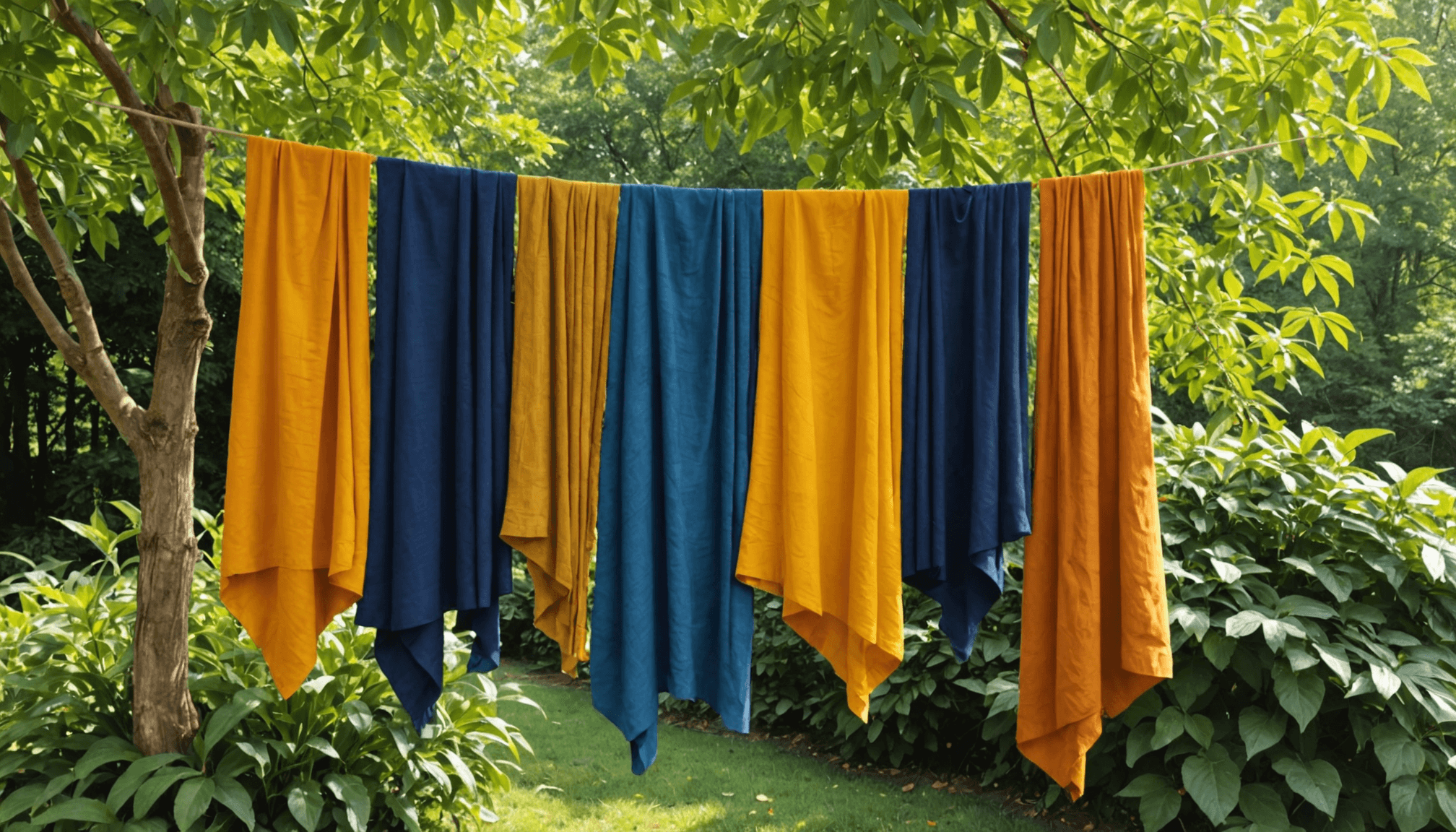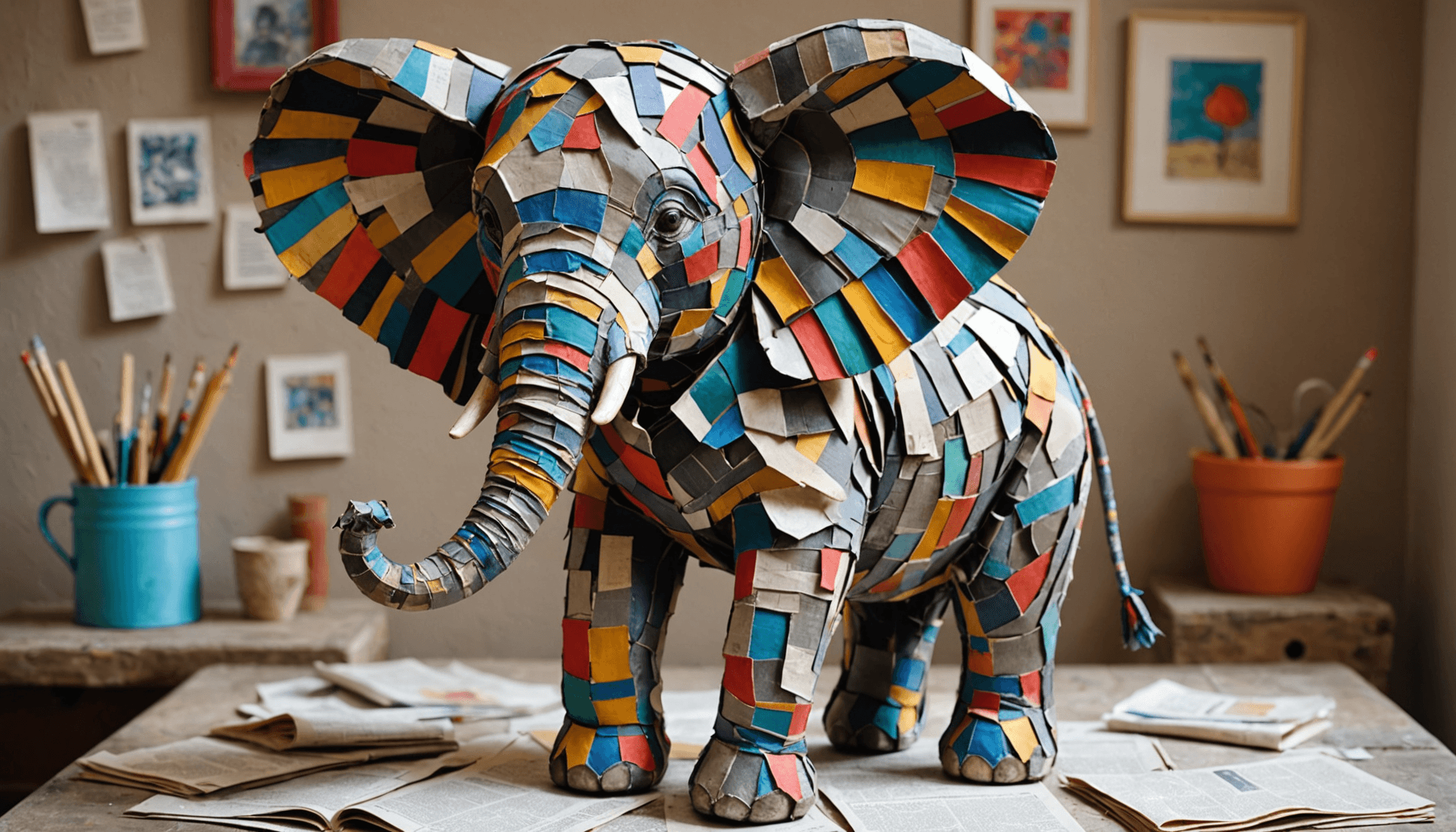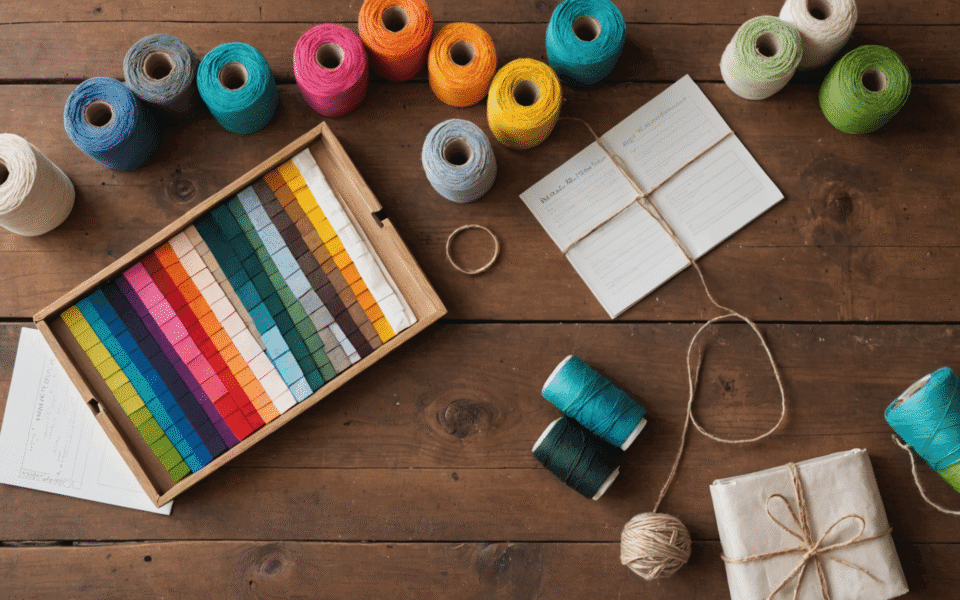Homemade Eco-Friendly Art Projects

- Eco-friendly Materials for Art Projects
- Creative Ideas for Recycled Paper Crafts
- Natural Dyes and Pigments for Eco Art
- Upcycling Household Items into Art
- Sustainable Practices for Young Artists
When embarking on DIY art projects, the choice of materials plays a pivotal role not only in the artistic outcome but also in the environmental impact of your creations. Opting for eco-friendly materials is not just a trend; it’s a conscious choice that reflects a commitment to green living. By selecting supplies that are sustainable and biodegradable, you contribute to a healthier planet while indulging your creativity.
Consider cotton fabric from sustainable sources for your embroidery and cross stitch projects. Organic cotton is free from harmful pesticides and fertilizers, making it an excellent choice for not just the environment, but also for those sensitive to chemicals. It provides a soft texture that’s perfect for detailed stitching, and you can easily find it in various colors and patterns. Pair it with eco-friendly threads made from organic cotton or recycled materials, which further enhances your commitment to sustainable practices.
Another wonderful option lies in utilizing paper made from recycled materials. Whether you’re creating intricate paper crafts or using it as a canvas for your cross stitch designs, this type of paper not only reduces waste but also often boasts unique textures and tones, adding character to your artwork. Think of the rich, tactile quality of recycled paper; each piece tells a story of its previous life while becoming a foundation for your new creation.
Don’t overlook the value of natural materials like wood and bamboo for your projects. Wood from sustainably managed forests, or bamboo, which grows rapidly and requires less water, can serve as robust bases for wall art or even functional pieces. They can be easily transformed through painting or embroidery, creating a beautiful blend of nature and handmade crafts. When finished, these projects can be both practical and aesthetically pleasing—a sustainable piece of art that serves a purpose and makes a statement.
Lastly, utilizing leftover materials from previous projects embodies the spirit of upcycling. Strips of fabric, remnants of paper, or even bits of yarn can find new life in innovative ways. Craft a quilt with mixed fabrics or stitch a series of small canvases together into a larger art piece. This practice not only minimizes waste but also adds a personal touch to your creations, showcasing your journey through art.
As you gather these wonderful eco-friendly materials, let your imagination flow and enjoy the process. Create with intention, and remember that every small choice contributes to a larger movement toward sustainability.
Creative Ideas for Recycled Paper Crafts
 Recycled paper is a versatile and accessible material that can be transformed into an array of imaginative crafts. Here are some fantastic ideas to ignite your creativity using reclaimed paper.
Recycled paper is a versatile and accessible material that can be transformed into an array of imaginative crafts. Here are some fantastic ideas to ignite your creativity using reclaimed paper.
One delightful project is paper mache, a classic technique that can be adapted for a variety of shapes and sizes. By mixing torn pieces of old newspapers or magazines with a glue solution made from flour and water, you can create sturdy sculptures, masks, or even decorative bowls. This hands-on project is not only fun for kids but also allows adults to engage in crafting while promoting eco-friendly practices.
Another engaging idea is to create handmade greeting cards using scraps of colored paper or decorative prints from old calendars and gift wrap. These personalized cards are perfect for any occasion and convey a heartfelt message, all while keeping waste to a minimum. You can embellish them with drawings, hand-cut designs, or even paper quilling, adding texture and depth to each piece.
For those looking to incorporate art into home decor, consider designing paper wreaths or garlands. Use strips of recycled paper to create stunning 3D embellishments that can be hung or displayed around your home. Not only do they add a unique touch to your space, but they also serve as a conversation starter about sustainable crafting.
Book lovers can turn their old, damaged books into beautiful art pieces as well. Instead of discarding them, consider repurposing pages into origami figures, collages, or even wall art. This creative transformation breathes new life into forgotten stories while reducing waste.
Finally, creating a paper scrapbook or journal is a wonderful way to document memories while using leftover paper. By combining different textures and colors, you can craft a visually appealing keepsake that tells your personal story.
- Utilize any old magazines and newspapers you have at home for a range of colorful and interesting projects.
- Involve your family in crafting sessions to make it a fun and engaging experience for everyone.
- Experiment with different types of glue, texture, and layering to unleash your creativity in unique ways.
- Don’t forget to personalize your crafts by incorporating drawings or messages that resonate with you or the recipient.
- Store scraps in a dedicated box for future projects; you’ll always have materials on hand to spark your inspiration!
Natural Dyes and Pigments for Eco Art
 Using natural dyes and pigments offers an exciting opportunity for creativity, but there are common pitfalls that can diminish your results. One frequent mistake is assuming that all plant materials will yield strong colors. While many plants can produce vibrant hues, some may result in pale or muted tones instead. To avoid disappointment, it’s essential to research and test a small batch of your chosen material before fully committing to a larger project. This step ensures that you’re aware of the color intensity you can expect.
Using natural dyes and pigments offers an exciting opportunity for creativity, but there are common pitfalls that can diminish your results. One frequent mistake is assuming that all plant materials will yield strong colors. While many plants can produce vibrant hues, some may result in pale or muted tones instead. To avoid disappointment, it’s essential to research and test a small batch of your chosen material before fully committing to a larger project. This step ensures that you’re aware of the color intensity you can expect.
Another common error is neglecting the mordanting process. Mordants are substances that help fix dyes to fabrics, enhancing color permanence. Skipping this critical step can lead to colors washing out or fading over time. Always check the specific mordant recommendations for the dye you’re using, as different materials require different mordants to achieve the best results. For instance, alum is often used as a mordant for many plant-based dyes and is relatively safe and accessible.
Inadequate preparation of your fabric can also result in uneven dyeing. New fabrics often contain finishes that can repel dyes, leading to patchy results. Pre-soaking your fabric in a vinegar or salt solution, or even washing it beforehand, removes these finishes, allowing for more even absorption of the dye.
Timing is another element where many crafters might falter. If you’re using fresh plant materials, the dyeing process is often time-sensitive. Waiting too long after harvesting can diminish the material’s dyeing ability. Utilize your freshly gathered botanicals promptly and remember that some colors may only be effective within a certain timeframe.
A significant oversight is not considering the safety aspects of dyeing. Many natural dyes, while derived from plants, can still be harmful if not handled correctly. Always wear gloves when handling dyes, and ensure your workspace is protected. Additionally, avoid using non-food-safe containers for dyeing, as remnants could contaminate food in the future.
When working with natural dyes, it’s easy to assume that you can mix various colors to get the shade you want. However, not all combinations yield desirable results and can often lead to muddy or unexpected colors. It’s wise to keep a dye journal, noting the results of each dye material, mordant, and any mixing attempts. This journal will serve as a valuable reference for future DIY art projects.
Lastly, patience is key in achieving the desired effect. Natural dyeing can be a slow process, requiring time for soaking and setting. Rushing through steps often leads to less vibrant colors. Allow each stage its due time and embrace the beauty of the process. By being mindful of these common mistakes and learning to avoid them, you can create stunning artwork with natural dyes that celebrate your commitment to green living and sustainable crafting practices.
Upcycling Household Items into Art
 Repurposing common household items into art provides an incredible avenue for creativity while promoting sustainability. Start by exploring your home for items that are no longer useful in their original form. Everyday objects such as bottle caps, cardboard boxes, old textiles, and even kitchen utensils can be transformed into eye-catching art pieces and functional items.
Repurposing common household items into art provides an incredible avenue for creativity while promoting sustainability. Start by exploring your home for items that are no longer useful in their original form. Everyday objects such as bottle caps, cardboard boxes, old textiles, and even kitchen utensils can be transformed into eye-catching art pieces and functional items.
For instance, you can collect glass jars to create beautiful candle holders or vases. With a bit of paint, twine, or decoupage, these jars can turn into stunning centerpieces or charming storage solutions. You can even add natural elements like dried flowers or twigs to enhance their aesthetic appeal, marrying functionality with artistry.
Paper towel and toilet paper rolls are fantastic canvases for imaginative projects. They can be cut, painted, and assembled into various shapes, from unique sculptures to fun puppets. Gather your children for a crafting session and encourage them to create characters or animals. This approach not only fosters creativity but also instills the value of reusing materials in young artists.
Old T-shirts can be easily upcycled into tote bags or quilts. Simply cut and sew them into your desired shape, and you have a functional item that showcases your creativity. This kind of project can teach practical skills while also promoting green living through the reduction of textile waste.
Consider turning wine corks into coasters or bulletin boards. With a bit of glue and creativity, you can arrange corks in various patterns to create personalized décor that is not only stylish but also eco-friendly. This project can serve as a wonderful conversation piece when guests visit.
Furniture, too, can undergo fab transformations. A wooden crate can be converted into a rustic side table with a little sanding and paint. Similarly, an old chair can be reimagined with vibrant cushions or a fresh coat of paint, breathing new life into forgotten pieces that can blend beautifully in modern settings.
Don’t overlook the charm of creating wall art from items like fabric scraps, old maps, or even puzzle pieces. Glue them onto a canvas or a sturdy cardboard frame. Layering different textures and colors can bring a unique visual flair to your space, all while championing the cause of reuse.
As you dive into these creative projects, remember that the most beautiful artwork often stems from innovation and individuality. Take a moment to assess the items you choose to repurpose and celebrate the stories they bring into your creations. By upcycling household items into art, you’re not just crafting; you’re making a conscious choice that contributes positively to the environment. So gather your materials, unleash your creativity, and enjoy crafting soulful pieces that reflect your commitment to sustainability!
Sustainable Practices for Young Artists

- What are some eco-friendly materials I can use for DIY art projects?
- Consider using organic cotton fabrics, recycled papers, and natural materials like wood or bamboo. These materials not only reduce environmental impact but also enhance the aesthetic and tactile quality of your art.
- How can I encourage sustainable practices in young artists?
- Introduce them to upcycling by using household items for creative projects and teach them about the importance of using eco-friendly materials. Engage them in discussions about recycling and the impact of their choices on the environment.
- What are some fun eco-friendly art project ideas for kids?
- Kids can enjoy making paper mache sculptures with old newspapers, creating greeting cards from scrap paper, or designing colorful collages using recycled materials. These projects foster creativity while emphasizing sustainability.
- Can natural dyes really produce vibrant colors for art projects?
- Yes, many natural dyes can yield brilliant hues, but it’s essential to experiment with different plants and mordants. Testing your materials and understanding their properties can lead to surprising and beautiful results.
- What should I be mindful of when upcycling household items into art?
- Ensure that the items are clean and safe to use, and consider their durability for the intended project. Also, get creative by thinking outside the box—many ordinary objects can have extraordinary new lives as art.
- Are there any safety concerns when using natural dyes?
- Yes, while many natural dyes are safe, some plants can be toxic. Always wear gloves when handling dyes and make sure to use non-toxic, food-safe containers for your dyeing processes.
- How can making eco-friendly art be beneficial for children?
- Creating eco-friendly art fosters creativity and expression while teaching children about the importance of sustainability. It encourages them to think about their impact on the environment and inspires a sense of responsibility toward green living.

